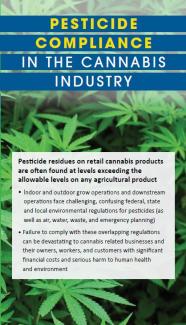Drop in EPA Enforcement Statistics: Is Glass Half Empty or Half Full?

Andrew Wheeler remarked during his confirmation hearing for EPA administrator that there has been “a lot of misleading information” suggesting the Trump EPA is not enforcing the nation’s environmental laws as vigorously as previous administrations. He said the agency opened more criminal cases in 2018 than it had in the previous year. He also referenced the Trump EPA’s focus on compliance rather than enforcement as an explanation for the downward trends, which he asserted does not mean that environmental laws are being ignored. “I think the more compliance assurance that we have, the fewer enforcement actions we need to take.”
Wheeler was responding to critics who have cited fewer inspections, fewer investigations and enforcement cases, lower amounts of penalties collected, and a significant number of enforcement staff who have left the agency over the last year.
For example, a recent report by the Environmental Integrity Project finds that, while EPA’s referral of 123 civil enforcement cases to the Justice Department in FY 2018 was slightly up from 2017, it was quite low compared to the past two administrations. The annual average was 211 under President Obama and 304 under President Bush. The watchdog group further found that the agency’s recovery of $69.5 million in total civil penalties in 2018 was “the lowest in both actual and inflation-adjusted dollars since at least 1994.” As for criminal prosecutions, while EPA opened 129 criminal cases in FY 2018, up from 2017, EIP claims that “the number of criminal cases opened and the number of defendants charged dropped in 2017 and 2018 to their lowest levels in nearly two decades.”
Susan Bodine, assistant administrator for the Office of Enforcement and Compliance Assurance, disputes the validity of statistics that focus only on a “narrow set of parameters” and which fail to credit efforts to ensure facilities comply with environmental laws, including cases where EPA is involved but states take the lead. “I want everyone to understand that these measures do not adequately represent the progress and the results that we are achieving in EPA’s enforcement and compliance assurance program,” she says.
Among other things, she refers to instances where EPA pressured states to force companies to address violations, noting that these successes are not captured in EPA’s statistics. She also says it is misleading to make comparisons with past years that involved unusually large settlements, such as that following the Deepwater Horizon incident. “It is not statistically valid to imply a trend by averaging an outlier value with other values.”
In the view of Cynthia Giles, who directed OECA under Obama, the data send a different message. “It tells me that they are backing away from doing the biggest, highest impact cases,” Giles told the Washington Post, “and those are the most important for protecting public health, and they’re the cases the states can’t or won’t do.”
Meanwhile, in its 2018 Year in Review, EPA says its enforcement activities have led to “almost twice” the amount of waste disposed of or treated in 2017, the report contends. “The focus on these areas has resulted in larger, more complex cases with greater reductions in pollution.” The agency also says that the number of facilities that voluntarily disclosed violations and certified a return to compliance increased 47 percent from the previous year.
Where does the truth lie? Has more enforcement activity shifted from the federal to the state level, or has there been a net decrease in enforcement? Has EPA’s shift in emphasis to compliance assistance achieved results, either in terms of reduced violations or better environmental outcomes? Or, as its critics claim, has the change in enforcement philosophy eroded deterrence? Environmental practitioners are experiencing déjà vu, harkening back to a similar debate under the George W. Bush administration.
Whatever the numbers signify, attorneys in the trenches have observed that what their clients value above all is certainty and a level playing field, where strong compliance programs are rewarded and other companies do not gain competitive advantage by cutting corners. Environmental commentators have also cautioned that large swings in enforcement trends may only be temporary, with backlashes possible from future administrations.
More analysis is soon to come. EPA’s inspector general is comparing the agency’s rates of enforcement between 2006 and 2018. The IG will be examining the key factors explaining results stemming from enforcement actions, across EPA regions and environmental statutes. And the Government Accountability Office has launched an investigation into EPA’s compliance program, analyzing how the agency’s law enforcement responsibilities are changing and whether it has adequate staff to carry them out.
The IG and GAO reports could add clarity to these competing statistics.
Drop in EPA enforcement statistics: Is glass half empty or half full?


